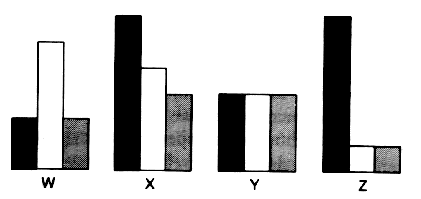
Ovarian cancer gene expression chips were searched in the gene expression omnibus (GEO) database ( ). Bioinformatics prediction of molecular mechanism of ovarian cancer All efforts were made to minimize suffering. The tissue specimens of 48 patients with ovarian cancer were collected strictly in accordance with the specimen collection standard during the operation. Written informed consent was obtained from each participant. Therefore, in this present study, the aim was to investigate the role of ST6GALNAC1 in the occurrence and development of ovarian cancer and whether ST6GALNAC1 functioned through the Akt signaling pathway.Īll experiments were approved by the Ethics Committee and Experimental Animal Ethics Committee of the Second Hospital of Anhui Medical University. It is highly possible that ST6GALNAC1 may affect biological characteristics of ovarian cancer stem cells (OCSCs) via the Akt signaling pathway. The Akt signaling pathway is activated in nearly 70% of ovarian cancers, leading to hyperactive signaling transmission that promotes cell growth, proliferation, and angiogenesis. The Akt signaling pathway is an essential intracellular pathway that can regulate multiple cellular processes including cell homeostasis, proliferation, survival, migration and differentiation. Previous findings have shown that ST6GALNAC1 played a part in elevating CSC phenotypes of colorectal cancer by activating the Akt signaling pathway.

It has been reported that ST6GALNAC1 was overexpressed in gastric, breast and prostate cancer cell lines, inducing sTn expression. ST6GALNAC1 encodes a sialyltransferase that acts as a catalyst for the synthesis of cancer-related sialyl-Tn (sTn) antigen critical for cell mobility.

Therefore, it is urgent to identify novel therapeutic and diagnostic targets to help improve the prognosis and treatment of ovarian cancer patients. Treatment for those patients that were in the late stages of ovarian cancer included cytoreductive surgery and platinum based cytotoxic chemotherapy, but both methods were considered failures since most patients relapsed. CSCs were once thought to be the causes of phenotypic and functional heterogeneities of tumors, and also considered one of the reasons for chemotherapy resistance and eventual tumor recurrence. Ĭancer stem-like cells (CSCs), or cancer-initiating cells (CICs), are highly tumorigenic cancer cells, and often possess the abilities of self-renewal, differentiation and tumorigenesis. More than 90% of malignant ovarian tumors are carcinomas, which may originate from the surface epithelium and/or fallopian tube of the ovary, with a poor prognosis and an overall 5-year survival rate of less than 40%. Ovarian cancer had long been a complicated and malignant tumor that is often difficult to diagnose and cure. This is caused by poor survival rates mostly owing to diagnosis at the advanced phase. Ovarian cancer has been reported to account for nearly 2.5% of female malignancies and 5% of deaths related to female cancers. When taken together, our findings defined the potential stimulative roles of ST6GALNAC1 in ovarian cancer and OCSCs, which relied on the Akt signaling pathway. In accordance with these results, the effects of ST6GALNAC1 in OCSCs were dependent on the Akt signaling pathway. Silencing ST6GALNAC1 was shown to be able to reduce cell proliferation, migration, invasion, self-renewal ability, tumorigenicity of OCSCs. High levels of ST6GALNAC1 were observed in OCSCs and ovarian cancer cells. Resultsīy using a comprehensive microarray analysis, it was determined that ST6GALNAC1 was highly expressed in ovarian cancer and it regulated the Akt signaling pathway. Subsequently, an Akt signaling pathway inhibitor LY294002 was introduced into the cluster of differentiation 90 + (CD90 +) stem cells, and cell proliferation, migration and invasion, levels of CXCL16, EGFR, CD44, Nanog and Oct4, as well as tumorigenicity of OCSCs were examined. After that, levels of ST6GALNAC1 in OCSCs and ovarian cancer cells were examined. In order to identify the differentially expressed genes related to ovarian cancer, microarray-based gene expression profiling of ovarian cancer was used, and ST6GALANC1 was one of the identified targets. This present study aims to investigate how ST6GALNAC1 affects ovarian cancer stem cells (OCSCs).

ST6GALNAC1 is highly expressed in cancer stem cells (CSCs), which correlates to high tumor-initiating, self-renewal and differentiation abilities.

Ovarian cancer is known as one of the most common cancers in the world among women.


 0 kommentar(er)
0 kommentar(er)
